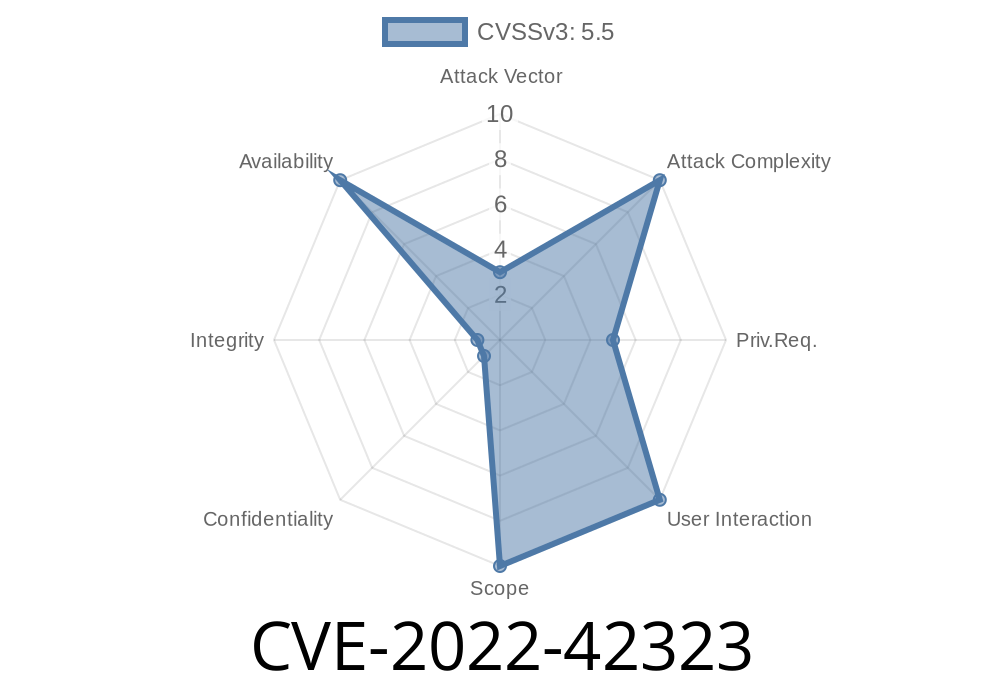The CVE-2022-42323 vulnerability is related to Xenstore, an essential component of the Xen Project hypervisor. It is a hierarchical tree-based database that manages the data shared between the hypervisor and its guest virtual machines (VMs). Xenstore allows for communication, management, and configuration between the host and guest VMs in a secure and efficient manner.
However, a major vulnerability has been discovered in Xenstore that allows cooperating malicious guests to create arbitrary numbers of nodes, potentially causing a Denial of Service (DoS) attack or unintended behavior within the Xen environment. This post will discuss the details of CVE-2022-42323, the code snippets responsible for the vulnerability, and the links to the original references.
Vulnerability Details
The Xenstore vulnerability arises from a design flaw introduced after the resolution of a previous vulnerability, XSA-322. When a Xenstore node owned by a guest domain is removed, its ownership is transferred to Dom, the privileged control domain in Xen. This design allows two collaborating malicious guests to create numerous Xenstore nodes by exploiting this transfer of ownership mechanism.
To exploit this vulnerability, guest domain A allows guest domain B to write into domain A's local Xenstore tree. Domain B then creates numerous nodes and subsequently reboots. As the removed nodes are now owned by Dom, their quantity is no longer limited by the Xenstore quota.
By repeating this process, the malicious guests can create an arbitrary number of nodes, leading to potential DoS attacks against the host due to resource exhaustion or unintended behavior due to configuration changes.
Code Snippet
The following code snippet illustrates the transfer of Xenstore node ownership to Dom after domain removal:
/* src/xenstored_domain.c */
...
static void domain_entry_rm(struct connection *conn, const char *domid)
{
...
if (dom->nr_entries) {
/* Removing the domain, let's reparent everything to DOM */
dom->nr_entries = ;
reparent_domain(conn, dom, );
}
...
}
...
In this snippet, the function domain_entry_rm is responsible for removing the Xenstore domain entry and transferring the ownership of all its nodes to Dom.
Original References
1. Xen Security Advisory (XSA) for this vulnerability: XSA-374
2. Public description of the related vulnerability XSA-322: XSA-322
3. Xen Project Hypervisor documentation on Xenstore: Xenstore
Exploit Mitigation
To mitigate this vulnerability, it is recommended to apply the available patches provided by the Xen Project to fix the underlying design flaw. The patches modify the ownership transfer mechanism to prevent arbitrary node creation by malicious guests. The affected Xen versions are from 4.12 onwards.
It is also advised to monitor Xenstore for any unexpected increases in the number of nodes, which may indicate exploitation attempts. Furthermore, isolating virtual machines and restricting guests' privileges, especially in multi-tenant environments, can help reduce the risk of exploitation.
In conclusion, CVE-2022-42323 is a serious vulnerability in Xenstore that can be exploited by cooperating malicious guests to create arbitrary numbers of nodes. The vulnerability can lead to potential DoS attacks or unintended behavior within the Xen environment. Administrators and users are advised to apply the available patches and follow best practices to secure their systems against such threats.
Timeline
Published on: 11/01/2022 13:15:00 UTC
Last modified on: 11/28/2022 20:12:00 UTC
